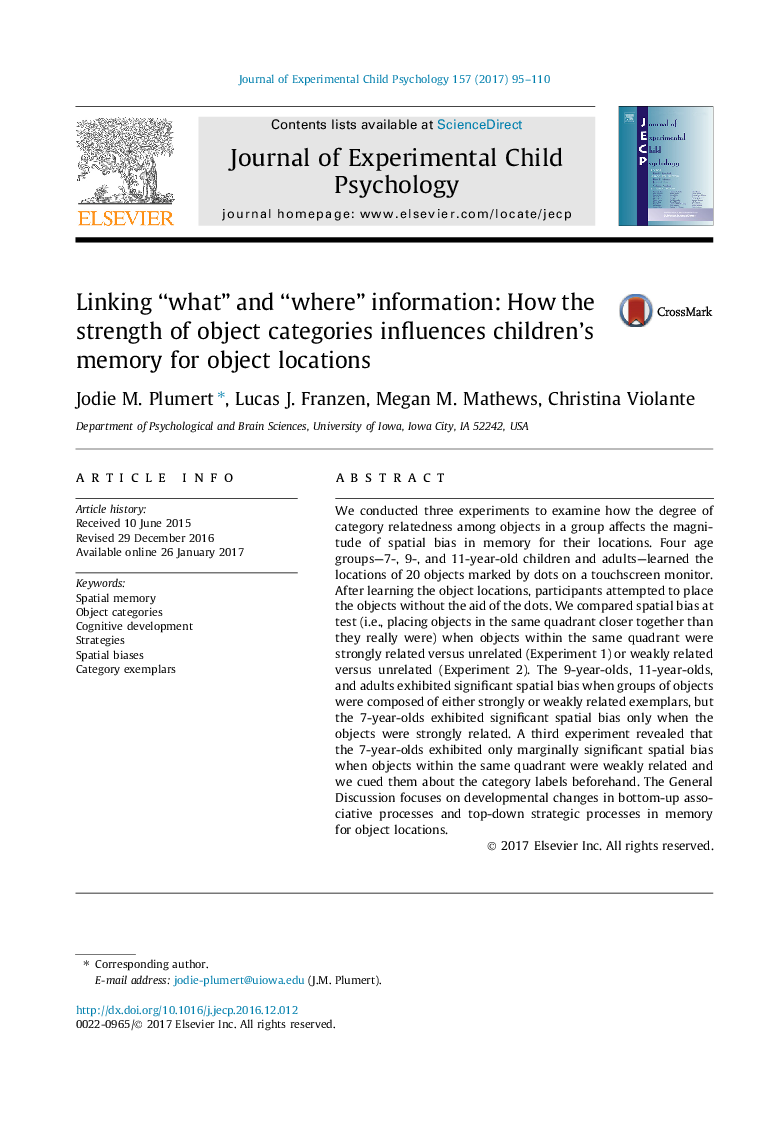| Article ID | Journal | Published Year | Pages | File Type |
|---|---|---|---|---|
| 5040048 | Journal of Experimental Child Psychology | 2017 | 16 Pages |
•Strength of object categories influences children’s memory for object locations.•9- and 11-year-olds and adults showed bias in high and low relatedness conditions.•7-Year-olds only exhibited spatial bias when objects were strongly related.•Bias and clustering were correlated for 7-year-olds in high related condition.•Cueing 7-year-olds about weakly related categories modestly increased spatial bias.
We conducted three experiments to examine how the degree of category relatedness among objects in a group affects the magnitude of spatial bias in memory for their locations. Four age groups—7-, 9-, and 11-year-old children and adults—learned the locations of 20 objects marked by dots on a touchscreen monitor. After learning the object locations, participants attempted to place the objects without the aid of the dots. We compared spatial bias at test (i.e., placing objects in the same quadrant closer together than they really were) when objects within the same quadrant were strongly related versus unrelated (Experiment 1) or weakly related versus unrelated (Experiment 2). The 9-year-olds, 11-year-olds, and adults exhibited significant spatial bias when groups of objects were composed of either strongly or weakly related exemplars, but the 7-year-olds exhibited significant spatial bias only when the objects were strongly related. A third experiment revealed that the 7-year-olds exhibited only marginally significant spatial bias when objects within the same quadrant were weakly related and we cued them about the category labels beforehand. The General Discussion focuses on developmental changes in bottom-up associative processes and top-down strategic processes in memory for object locations.
